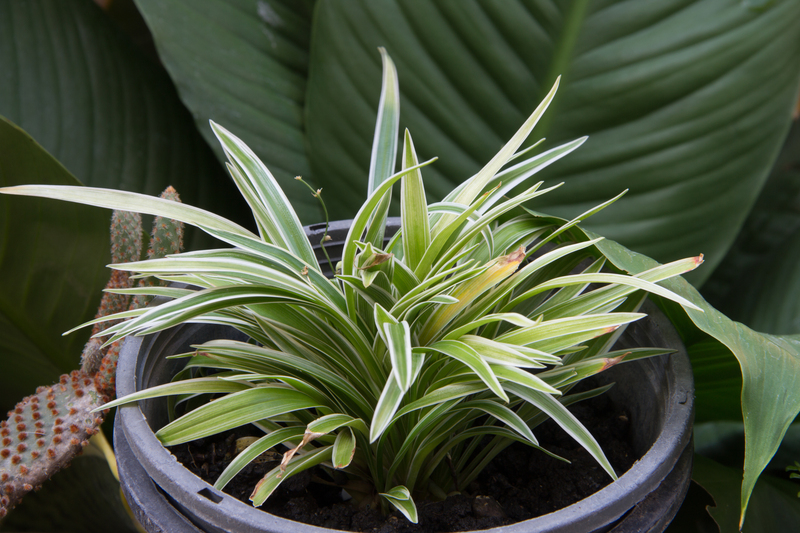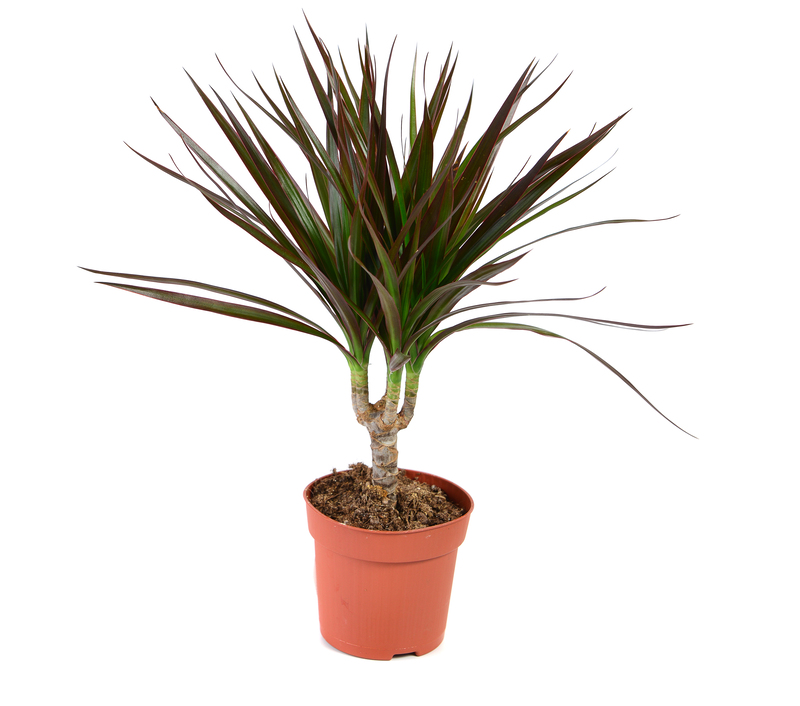Discover the Joy of Growing a Thriving Herb Garden
Have you ever dreamed of stepping into your backyard, balcony, or even kitchen and picking a handful of aromatic, fresh herbs for your next meal? If so, you're not alone--gardeners everywhere revel in the small but profound pleasures of cultivating their own thriving herb garden. Not only does growing herbs offer a source of delicious flavors and enticing fragrances, but it also boosts your well-being by bringing you closer to nature. Whether you are a seasoned green thumb or a complete beginner, this comprehensive guide will help you unlock the secrets to nurturing a healthy, productive herb garden at home.

Why Start Your Own Herb Garden?
Before we jump into the nuts and bolts of herb gardening, let's look at why so many people are embracing the art and science of growing herbs at home. A flourishing herb garden brings multiple benefits:
- Freshness at Your Fingertips: There's no comparison between shop-bought and freshly picked herbs when it comes to flavor, aroma, and nutritional value.
- Cost-Effective and Sustainable: Growing your own culinary herbs reduces grocery bills and lessens your carbon footprint by cutting down on packaging and transportation.
- Health and Wellness: Many herbs, like basil, mint, and oregano, are packed with antioxidants and have medicinal properties.
- Therapeutic Effects: Gardening is a rewarding, stress-relieving hobby that boosts mental health and encourages outdoor activity.
- Beautiful and Versatile: Herb plants can be both attractive and practical, enhancing the beauty of your living spaces with lush greenery and blossoms.
Ready to discover the joys of growing a successful herb garden? Let's dig in!
Getting Started with Your Herb Garden
Choosing the Perfect Location
One of the primary factors determining your herb garden's success is location. Most herbs thrive in bright, sunny spots that get direct sunlight for at least 6-8 hours a day. However, some herbs, such as mint and parsley, can tolerate partial shade. Here are some options to consider:
- Outdoor Gardens: A backyard bed or raised planter gets optimal sunlight and drainage for vigorous herb growth.
- Container Gardens: Perfect for balconies, patios or even indoors--herbs grow well in pots with good drainage and quality soil.
- Indoor Herb Gardens: A sunny kitchen windowsill can support several small herb plants, putting fresh flavor right within reach of your cooking space.
Soil and Drainage: The Foundation of a Flourishing Herb Garden
For a healthy herb garden, high-quality soil is crucial. Most herbs prefer well-drained, slightly alkaline soil ranging from pH 6.0 to 7.5. You can improve your soil by adding organic compost or well-rotted manure. If growing in pots, choose a premium organic potting mix and ensure containers have adequate drainage holes to prevent root rot. For clay-heavy garden soil, consider raised beds or adding sand and compost to improve drainage.
Picking Your Herbs: Classic Favorites & Unusual Delights
What herbs should you include in your garden? Consider your cooking preferences, climate, and the space available. Here are popular and easy-to-grow choices to start your thriving herb garden:
- Basil: A summer staple perfect for Italian cuisine.
- Mint: Versatile, aromatic, and great for teas or desserts--just remember to keep it contained!
- Rosemary: Hardy and fragrant, ideal for roasts and breads.
- Parsley: Biennial, rich in vitamins and adds freshness to many dishes.
- Thyme: Tough, drought-resistant, and flavorful in soups and stews.
- Sage: Delightful with meats and in stuffings, as well as highly ornamental.
- Cilantro (Coriander): Critical for Mexican, Thai, and Indian cuisines.
- Chives: With beautiful edible flowers, chives enhance salads and dips.
Don't be afraid to experiment with less common herbs like lemon balm, tarragon, or fenugreek for even more variety in your herb patch.
Planting and Caring for Your Herb Garden
Starting from Seeds vs. Seedlings
Should you grow your herbs from seed or begin with nursery-bought seedlings? Each approach has its pros and cons:
- Seeds: Less expensive and offer a greater variety, but require patience and consistent care during germination.
- Seedlings: Fast and simple, perfect for beginners who want instant gratification and a quicker harvest.
Pro Tip: If you are new to growing herbs, start with sturdy seedlings for easier success. Gradually experiment with seeds as your confidence grows.
Planting Your Herb Garden
When planting, allow sufficient space between each herb so they have room to expand. Most herbs like basil and parsley need spacing of 8-12 inches, while larger, bushy herbs like rosemary and sage require more elbow room (up to 2-3 feet apart). Water young plants gently after planting and keep them shaded for a day or two while they settle into their new home.
Essential Care & Maintenance for a Thriving Herb Garden
To ensure your herb garden grows lush and productive, follow these simple but critical care guidelines:
- Watering: Most herbs prefer consistently moist, but not soggy, soil. Water early in the day and focus on the roots to discourage fungal diseases. Mediterranean herbs like rosemary and oregano tolerate drier conditions once established.
- Feeding: Herbs are light feeders. Apply a balanced organic fertilizer or compost once a month during the growing season. Avoid over-fertilizing, which can reduce flavor potency.
- Pruning and Harvesting: Regularly pinch off herb tips to encourage bushier growth and stronger fragrance. Harvest leaves in the morning for peak flavor, and never remove more than a third of the plant at a time.
- Mulching: Organic mulch like straw or shredded leaves helps retain soil moisture, suppress weeds, and feed the soil as it decomposes.
- Pest and Disease Management: Most herbs naturally repel pests, but stay vigilant for aphids, whiteflies or fungal spots. Use organic remedies like neem oil, insecticidal soap, or handpicking rather than chemical pesticides.
Companion Planting: Maximizing Health and Yield
Growing various herbs together--or interspersing them with vegetable and flower beds--can improve both productivity and pest resistance. For instance, basil enhances the growth of tomatoes and peppers, while strong-smelling rosemary or sage can deter cabbage moths and carrot flies. Mixing it up in your herb garden leads to a healthy and balanced ecosystem.
Popular Design Ideas for a Vibrant Herb Garden
Formal vs. Informal Herb Gardens
- Formal Herb Gardens: Feature symmetrical patterns, geometric beds, and neat rows. Ideal for larger outdoor spaces and historic homes.
- Informal Herb Gardens: Looser, naturalistic arrangements that encourage creativity--herbs are interplanted with flowers and vegetables in beds, raised containers, or even repurposed household items.
Vertical and Kitchen Herb Gardens
Short on space? Go vertical! Use wall-mounted planters, trellises, or stacked pots to grow a variety of herbs in a small footprint. In the kitchen, group small pots on a sunny windowsill or create a hanging herb basket right where you cook for the freshest flavor imaginable.
Harvesting, Storing, and Enjoying Your Homegrown Herbs
Best Practices for Harvesting Herbs
Frequent, gentle harvesting encourages more growth. The best time to pick herbs is early in the morning, after the dew has dried but before the sun's heat dissipates the aromatic oils. For perennial herbs (sage, rosemary, thyme), always leave enough stem and foliage behind so the plant can continue to thrive.
Preserving Flavor for Year-Round Use
Don't let your homegrown herbs go to waste during winter! Here are some tips to enjoy the fruits of your herb garden all year:
- Drying: Hang bunches upside-down in a well-ventilated room or use a dehydrator. Crumble and store in airtight jars away from light.
- Freezing: Chop herbs and freeze in ice cube trays with water or olive oil for easy use in soups and stews.
- Infusing: Make flavored oils, vinegars, or butters with your fresh harvest for gourmet-level cooking.
Creative Uses for Fresh Herbs
- Gourmet Cooking: Add fresh herbs to salads, pestos, cocktails, and main dishes for vibrant flavor.
- Herbal Teas: Brew mint, lemon balm, or chamomile leaves for soothing homemade brews.
- Natural Remedies: Use herbs like thyme or oregano in home remedies for coughs and colds.
- Decoration: Bundle and hang fragrant herbs for a natural air freshener, or use edible blooms to decorate cakes and salads.

Troubleshooting & Common Herb Gardening FAQs
Why are my herb leaves turning yellow?
Yellowing leaves can be a sign of overwatering, poor drainage, or lack of nutrients. Ensure pots are well-draining and reduce watering frequency. A gentle liquid fertilizer can help reverse mild nutrient deficiencies.
My basil is bolting - what does this mean?
When basil produces flowers and seeds, it's called "bolting." Harvest leaves regularly and pinch off any flower buds as soon as they appear to keep your basil plants focused on leafy growth.
Can I successfully grow herbs indoors all year?
Absolutely! As long as your plants get at least 6 hours of light (natural or via grow lights), proper watering, and occasional feeding, your indoor herb garden can be productive no matter the season.
Embrace the Joy of Gardening: Start Your Herb Garden Journey Today!
In conclusion, growing a thriving herb garden is one of the most rewarding hobbies you can pursue, offering culinary delights, natural health benefits, and a heightened connection with the environment. Whether you have a sprawling backyard, a compact balcony, or just a sunny kitchen window, there is a way for everyone to experience the magic of homegrown herbs.
Ready to get started? Gather some seeds or seedlings, roll up your sleeves, and discover the joy of cultivating your very own productive herb patch. With a little care, patience, and creativity, your herb garden will flourish--nourishing body, mind, and spirit for years to come.
Let your home burst with flavor, fragrance, and the satisfaction that comes only from growing your own herbs. Happy Gardening!


